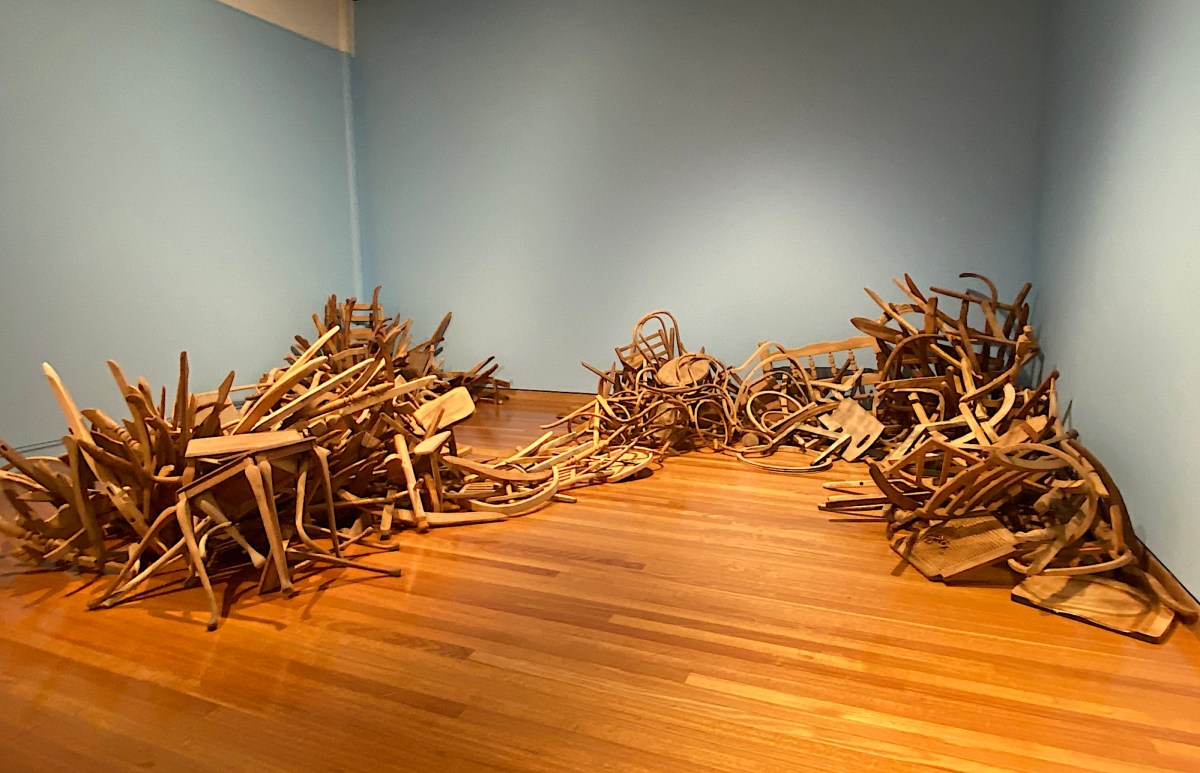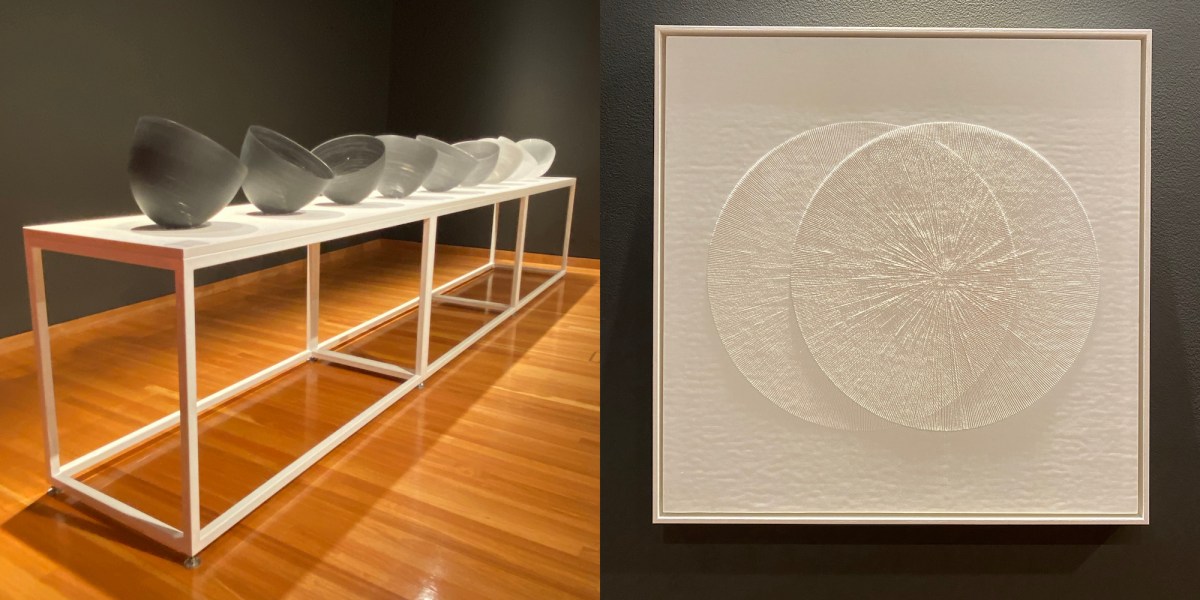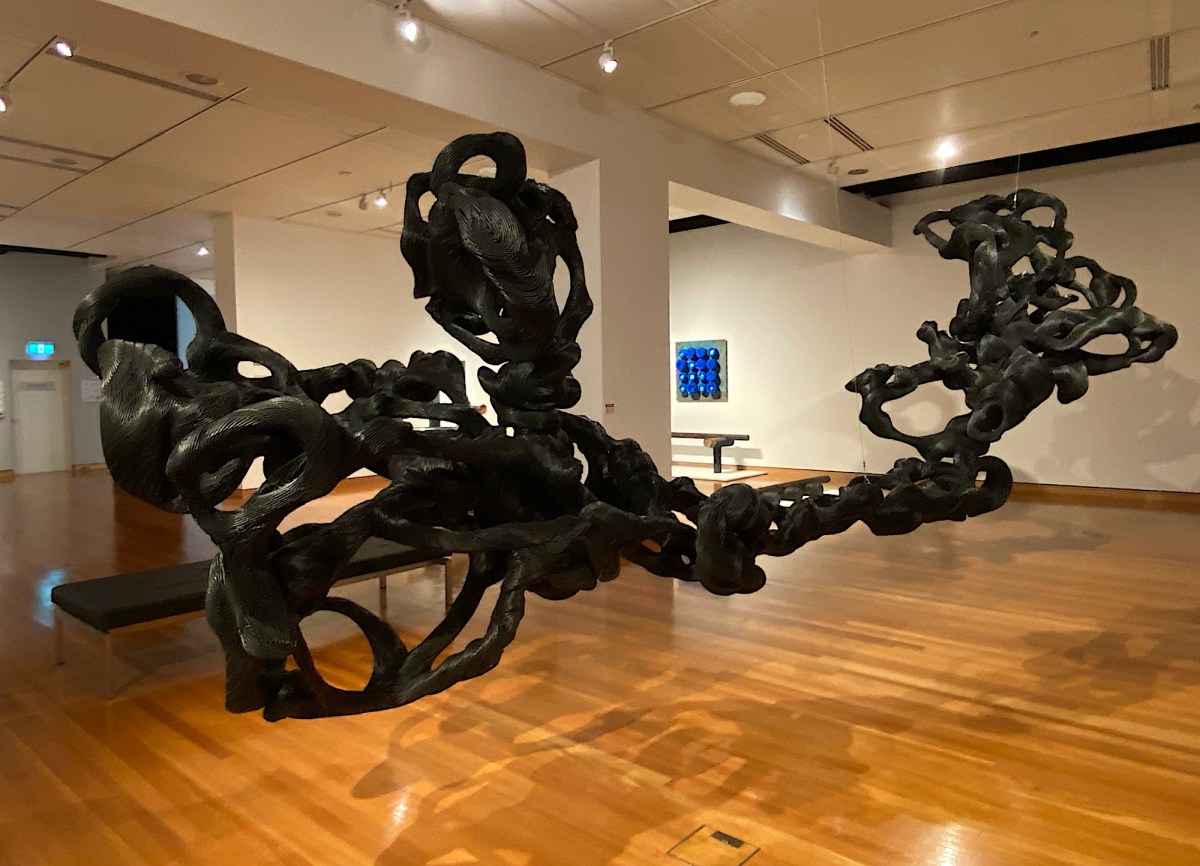Curated by Virginia Rigney, the exhibition Materiality…but not as we know it corrals together 10 artists who call Canberra, and its surrounds, home. However, walking through this exhibition, the connective tissue feels less based on geography, and more about a driven focus by these artists in their material pursuit.
Rigney’s thesis is to explore the modernist dictum “form follows function” in our times, asking whether we can still find a “truth to materials”. If these artists are the answer, then yes we can. The exhibition bridges the terrain between design and sculpture, and has a deep material drive.
Further, for several of the artists, it is a step back away from function to allow the material to almost be “more true” in its physical presence, and their artistic consideration.
A great example is the work of Ashley Eriksmoen, who was recently presented in the NGV Triennial. Making work from timber furniture that has been collected from waste and then reconfigured as sculptures, she hopes to raise questions around consumer drain on natural resources.
Her stunning work Cool new things for your house (2024) sits central within this exhibition and is one of its highlights. Eriksmoen probes us to think about waste when furnishing our homes, and while discarding the same objects with a renovating zeal.

Her work makes sense in sight of Lucy Irvine’s sculpture, Made of Holes (2016), which hovers suspended in the gallery space. It is woven from irrigation piping and cable ties – materials often used for control and adaptation.
It also has a connection with Elliot Bastianon’s sculptures, which seemingly span the worlds of industry and geology. Utilising an electroplating process, his sculptures use found and scrap copper wire and tools, which then oxidise to a gorgeous green or secrete a build-up of metal around the joints.
Like Eriksmoen, he is interested in a material’s life cycle, and also raises questions around resource waste and mineral extraction for industrial use. What is lovely about both their works is that they turn to functional materials, but in their hands, form is far from functional.
Picking up on that notion of alchemy embedded in material form is glass artist Harriet Schwarzrock, with a new suite of works comprising a suspended installation and a suite of pedestal-based pieces, Nearly, barely, there (#1-7).
A trained glass blower, Schwarzrock’s objects pulsate or intensify with the viewer’s proximity, activating their plasma illumination within. She is also interested in the play on the word “plasma”, as both a bodily life force and a gas that can be illuminated through contact.
More broadly, viewing the exhibition feels exciting and dynamic. For example, Irvine’s bold black sculpture sits alongside Mel Douglas’ minimal glass vessels offering a tension of scale and delicacy.
For Douglas, form is not just a support for drawing, but a three-dimensional drawing itself. A long pedestal displays vessels that graduate in a darkening scale of grey, their surfaces are incised with a repetitive weave of lines, further defining their form. On a wall are glass “drawings” – that are essentially flattened vessels – which enable a three-dimensional consideration through their mark-making in glass on the paper surface.

This rethinking of a lineage of a material is perhaps most literally played out by Trent Jansen who recreates iconic design objects in other materials. They are presented in an alcove against red walls, which feels a little jarring aesthetically in context of the show, but does conceptually fit.
Read: Exhibition Review: Anni and Josef Albers, National Gallery of Australia
The exhibition is completed with adapted furniture by Rebecca Selleck and James Tylor, cast glass boomerangs and gulamon (coolamons) by First Nations artist Paul Girrawah House, and a photographic installation by Marian Drew, where she plays off that notion of the lens framing a landscape, bending her images around corners, being folded back at the corners or dropping to meet the floor. Conventionality is further obstructed by punching some objects to the foreground and blurring the background of her images.
This malleability, and yet inherent integrity to the material, is the connecting thread across the show and, when presented in conversation across such a broad sweep of experimentation and finesse, it offers an enjoyable, thought-provoking experience for viewers.
Materiality…but not as we know it
Canberra Museum + Gallery
Until 20 October 2024.
Free.





